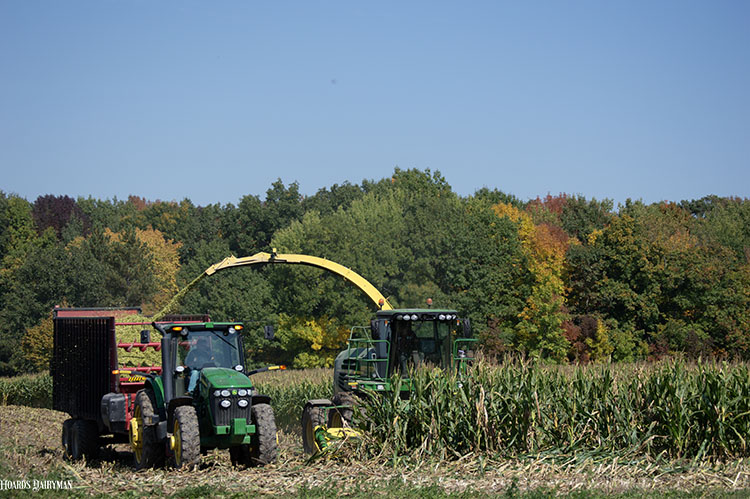
“This harvest for silage is going to be different, but let’s embrace the opportunity at hand and manage what we can,” said John Goeser during the August Hoard’s Dairyman webinar. Although farmers don’t have control over the precipitation or temperature Mother Nature hands us, we can influence certain aspects of harvest to produce the best feed possible.
He also discussed kernel processing, another factor that can be controlled.
“Historically, 60% to 70% has been a desirable goal for kernel processing score, but this benchmark is changing,” he shared. “The new goal for kernel processing score is 75% to 80%.” This will be especially important in fields where corn is harvested at greater maturity due to varying whole plant moisture levels this fall. Goeser noted that fermentation will raise the score 5 to 10 units, so keep that in mind when setting a target.
Goeser expects 2023 corn silage to be lower in yield but high in quality, as explained in the article, “What to expect from this year’s corn.” He emphasized that the silage stored in our pits, bunkers, piles, and silos will be wide ranging in quality, highlighting the need to accurately assess the feed’s value.
He used the analogy of sighting in a rifle scope. “If we take one shot at a target, is it sighted in?” he asked the webinar listeners. “No. We can’t make a decision based on one single shot.” Likewise, we can’t place much weight on a single sample of silage.
“When we shoot our rifle, we take five, three shot groups, and average that to understand what adjustments we need to make,” he said. “Animal nutrition is the same.”
Although corn silage tends to be a bit more consistent than hay or haylage, Goeser said this year’s corn silage is going to be more heterogeneous than we’ve experienced in quite some time. He recommended working with a nutritionist to adjust the rations based on multiple samples taken over a meaningful period of time.
To learn more, watch the August Hoard’s Dairyman webinar, “Optimizing corn silage harvest under variable growing conditions.” This webinar was sponsored by Lallemand Animal Nutrition.











